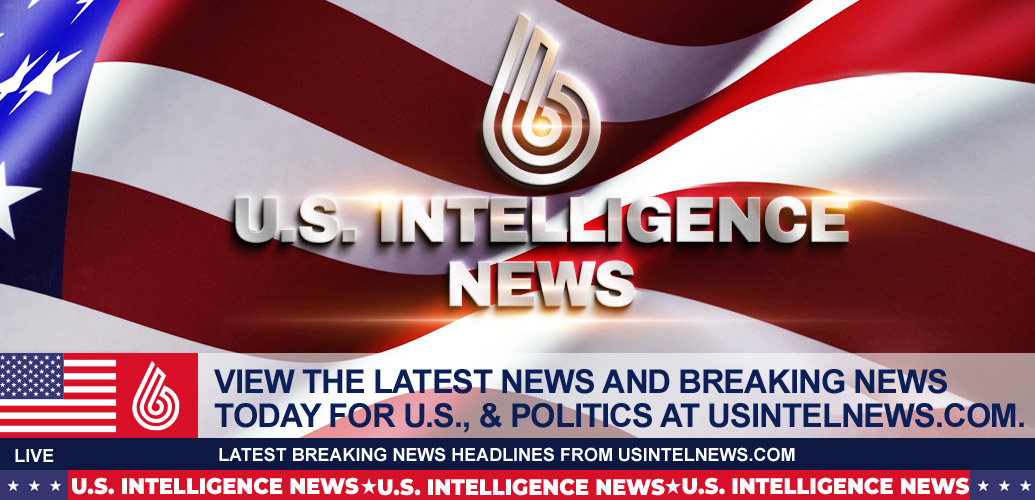
The U.S. Intelligence Community
Via Teleconference
3:06 P.M. EDT
MODERATOR: We appreciate you joining our call as we preview the release of the forthcoming National Biodefense Strategy and Implementation Plan.
As a reminder, today’s call is on background, attributable to “senior administration officials.” And the contents of today’s call are embargoed until 9:00 a.m. Eastern tomorrow, Tuesday, October 18th.
For your awareness, not for your reporting, speakers on today’s call are [senior administration official], [senior administration official], [senior administration official], and [senior administration official].
That being said, I will pass it off to [senior administration official].
SENIOR ADMINISTRATION OFFICIAL: Great. Thank you, [moderator]. Let me just turn it over first, actually, to [senior administration official]. Please, why don’t you go forward, [senior administration official]?
SENIOR ADMINISTRATION OFFICIAL: Happy to. And, [senior administration official], do you hear me okay? Am I coming through all right?
SENIOR ADMINISTRATION OFFICIAL: I can.
SENIOR ADMINISTRATION OFFICIAL: Excellent. Well,
thank you all for making the time to join this conversation today. We’re grateful for it.
Last week, the Biden-Harris administration released our National Security Strategy, which included, as a core component of our approach to national security, combating pandemics and strengthening biodefense.
Now, we are excited to share that, tomorrow morning, the President will sign National Security Memorandum-15 on Countering Biological Threats, Enhancing Pandemic Preparedness, and Achieving Global Health Security, and also release the new National Biodefense Strategy and Implementation Plan on Countering Biological Threats, Enhancing Pandemic Preparedness, and Achieving Global Health Security.
So, these three documents — the National Security Memorandum, the strategy, and the implementation plan — together outline this administration’s comprehensive approach to protecting our nation from pandemics and from biological threats.
To ensure an effective approach to pandemic preparedness and biodefense across our government, National Security Memorandum-15 affirms a strong policy coordination structure for biodefense across federal agencies with oversight here at the White House under the National Security Advisor.
NSM-15 also does a few other critical things. Those include:
One, directing departments and agencies to prioritize biodefense and implementation of the National Biodefense Strategy in their annual budgets.
Two, directing the intelligence community to continuously track the evolving threat landscape in this area, providing critical information needed to address naturally occurring, accidental, and deliberate biothreats.
And, three, ensuring the U.S. government continuously adapts to this evolving threat landscape by exercising annually emergency responses, reviewing our ongoing responses, and adjusting federal priorities on a regular basis so that we are taking into account lessons learned.
To go into a bit more detail on the strategy, let me hand things back to [senior administration official]. Back to you, [senior administration official].
SENIOR ADMINISTRATION OFFICIAL: Thank you, [senior administration official]. And thanks, everyone, for joining today.
As we all know, COVID-19 has absolutely devastated communities across America and around the world. It’s resulted in millions of deaths and trillions of dollars of economic losses globally. And beyond COVID, the global community is concurrently fighting outbreaks of monkeypox, of polio, Ebola in Uganda, highly pathogenic avian influenza right here in the United States, and other infectious diseases. All of that stretches thin the global resources and demonstrates gaps in our current preparedness against pandemics.
We also know that the risk of another pandemic as bad or worse than COVID is a real threat. Some modelers predict that that could happen within the next 25 years, if not sooner.
The new National Biodefense Strategy therefore outlines a bold vision, along with critical actions, towards a world free of pandemics and catastrophic biological incidents.
It does that by transforming the federal government’s ability to prevent, detect, to prepare for, respond to, and recover from outbreaks and other biological incidents, of course, in partnership with our international, state, local, Tribal, territorial, and private-sector partners.
Let me just give you an overview of the implementation plan. The implementation plan will drive a whole-of-government effort across over 20 federal agencies that were involved in creating this plan. There are five overarching goals for the National Biodefense Strategy, and I want to walk you through each:
The first is to detect — to ensure awareness and early warning of pandemics and biological threats.
The second is to prevent — prevent epidemics and biological incidents before they happen, whether they’re naturally occurring, deliberate, or accidental.
The third is to prepare — to prepare for reducing the impacts of epidemics and other biological incidents when they occur.
The fourth is to respond — to rapidly respond to outbreaks and biological incidents when they occur.
And fifth is recover — to restore the community, economy, and environment after a pandemic or biological incident.
Now, in this short call, we won’t be able to go into all the details. I encourage you to look at the plan, which has a tremendous number of actions against each of these goals.
But just to give you a few highlights:
One of the key focus areas is strengthening local capacities, domestically and globally, for pandemic preparedness. So, that includes recruiting, training, and sustaining a robust, permanent cadre of health workers in all 50 states. That includes lab technicians, epidemiologists, veterinarians, community-based health workers.
The second example of efforts to strengthen local capacities globally is to — is the United States will make, through this plan, a commitment to support directly at least 50 countries to strengthen their own capacities locally to prevent, detect, and respond to infectious disease threats.
Of course, naturally occurring infectious diseases are only one concern. The plan and the goals also call for preventing pandemics and biological incidents that come from accidental and deliberate sources.
And by that, I’m going to give two examples of actions in the plan. One is to galvanize support for international mechanisms to strengthen lab safety and biosecurity norms and practices globally. And second, to strengthen international norms against biological weapons, including through efforts in the Biological Weapons Convention that help foster greater transparency among all nation-states that are party to that convention.
These goals collectively aim to help us protect against pandemics, to deter and detect biological weapons use, and to equitably protect the health of Americans and people around the world, as well as strengthen the health of our agriculture and our environment.
Of course, pandemic preparedness isn’t just about strengthening local capacities, it’s also about transforming and modernizing the way we pursue medical and scientific breakthroughs. And for that, I will turn it over to my colleague, [senior administration official], from the Office of Science and Technology Policy here at the White House to give you a little bit of a deeper dive on those scientific breakthroughs that are centered in the strategy.
Over to you, [senior administration official].
SENIOR ADMINISTRATION OFFICIAL: Great, thank you so much, [senior administration official]. And thank you all for taking the time to be with us today.
There are many things that COVID-19 has taught us. But importantly, one of the important things that COVID has taught us is that we need to be able to move much faster to counter pandemic threats, and we also need to be prepared for completely unknown threats — so not just the things we know, but the things we don’t know.
Currently, there are 26 families of viruses that are known to infect humans, many of which we are far less prepared for than coronaviruses. To adequately prepare for the full range of threats, the National Biodefense Strategy plans out a series of moonshot efforts building off of last year’s release of the American Pandemic Preparedness Plan that will help us accelerate the speed of our response and prepare for these unknown threats.
These science and technology goals lay out timelines that are not possible today, but these capabilities can be achieved and are within our reach with the right resources over the next 5 to 10 years.
These capabilities include, one, transforming early warning of pathogens through next-generation technologies, including those that can detect unknown pathogens spreading asymptomatically, so we can detect and contain an outbreak soon after it emerges.
Two, launching diagnostics for any new pathogen within 12 hours of an outbreak, scaling to tens of thousands of diagnostic tests within a week, and developing rapid tests within 90 days.
Three, developing novel vaccines within 100 days, manufacturing enough vaccine to cover the U.S. population within 130 days, and working with international partners to develop sufficient vaccine supply for high-risk global populations within 200 days.
And finally, four, accelerating therapeutic development and validation to repurpose existing drugs within 90 days or develop novel therapeutics within 180 days.
Importantly, we are already implementing key activities in the national Biodefense Strategy with baseline funding. On top of these efforts, solely achieving the most transformative objectives will require the support of Congress to provide funding, including the President’s $88 billion request over five years for pandemic preparedness.
Collectively, these capabilities will not only protect Americans and our partners globally from pandemics and other biological threats, but, importantly, they will produce capabilities that will improve everyday health and enhance health equity for all Americans.
And with that, I will turn it back to [moderator] to lead us through the moderated Q&A.
MODERATOR: Thanks, [senior administration official] and [senior administration official].
So, folks, if you want to use the hand-raising feature, we will pull you into the panelist box and have you ask questions.
But we’ll start with Sheryl Stolberg from the New York Times, if you would like to unmute yourself.
Q Yes, I would. Last year, my colleagues and I reported that the stockpile was woefully underprepared — the national stockpile — in part because more than half the budget went to the anthrax vaccine. And at the time, the administration asked — or said it was going to review the stockpile.
And so I’m wondering: To what extent does this new plan address the national stockpile, which was one of the really big failures of the COVID-19 pandemic?
SENIOR ADMINISTRATION OFFICIAL: Sheryl, thank you. This is [senior administration official] here. That was one critical area of our review.
Just to give you an example: Around PPE, there was a critical — in addition to the shortage — the challenge you mentioned — there was also a major challenge. I remember being, before coming to government, on the frontlines of — without sufficient PPE to do COVID testing, like many of my fellow frontline health workers.
And so this was an area that had been deeply looked at and reviewed. And one of the key actions in the plan is to ensure we have a resilient and scalable supply of various items in our stockpile, but including PPE.
And I’ll give you an example there of the kinds of actions we’re — have put forward. One is to enable sufficient supply and manufacturing capabilities for PPE in the United States that can enable a containment response and meet U.S. peak projected demand for healthcare and other critical infrastructure workers during an epidemic and pandemic.
And that includes PPE capacity — so ensuring we’re not stuck with just a few providers; that we have a steady state and market supply; that we have the ability to manufacture surge capacity during, and that we have storage and inventory capacity.
But there’s also actions that are related to ensuring, through policy incentive and regulation, that we are able to safeguard our PPE supply chain diversity.
And I’m just giving you one aspect of the SNS, of course. But it is a big part of the plan, Sheryl, in short.
And we’ve also asked for substantial funds in that $88 billion FY23 request — which, of course, is a five-year request; that’s about $16- to $17 billion a year to further enhance the stockpile. And there’s information that is online on that request.
MODERATOR: Thank you. We’ll next go to Michael Gordon from the Wall Street Journal. You can unmute — you should be able to unmute.
Q Yeah, can you hear me?
SENIOR ADMINISTRATION OFFICIAL: Yes.
Q Okay, thank you. One area that’s received a lot of attention, particularly in light of the COVID-19 discussions, has been so-called gain-of-function research. And the question that’s arisen is whether there’s sufficient oversight and regulation of this domestically and also internationally.
And, unfortunately, this issue has been politicized. But as you guys well know, in the scientific community, it’s regarded as a legitimate subject of investigation.
My question is: As part of your strategy, are you taking any specific actions to further tighten, regulate, or provide additional oversight of this genre of research in the United States? And internationally, is — is that what you talked about improving lab safety standards? Or do you think that that is not necessary at this point in time and could be detrimental?
Could you please explain what your thinking and actions are in this area?
SENIOR ADMINISTRATION OFFICIAL: Yeah, thanks, Michael. Let me give a topline there and then see, [senior administration official], if you want to add anything or, [senior administration official], if you’d like to.
Indeed, that is a key focus. The focus on biosafety and security is vital.
So, there’s three major actions. One is to promote safe and secure biological laboratories and practices. An example of that is to ensure we have — support the development of a domestic and international cohort of biosafety and biosecurity experts that can champion responsible research and really cultivate measurably improved biosafety and security practices globally. That’s one example, Michael, to your question.
Another area of focus is really strengthening responsible conduct for biological research. And here, there’s actions that are put forward, including completing an interagency review of efforts to strengthen responsible conduct for biological research and to develop and operationalize plans across the interagency.
A third area — and then I’ll see if my colleagues want to add anything more specific — is to accelerate biosafety and biosecurity innovation. So, there is an action here to ensure we do that by identifying and addressing research gaps needed to improve any evidence-based biol- — laboratory biological risk management. There’s a lot there just to figure out what works and what doesn’t. And that is also a focus.
I don’t know, maybe I’ll turn to [senior administration official] first and then to [senior administration official] to see if you want to add anything to what I’ve said.
[Senior administration official], we can’t hear you. Maybe we’ll go to [senior administration official] first and then see if [senior administration official] has anything.
SENIOR ADMINISTRATION OFFICIAL: Yeah, so, maybe I’ll just jump in, and then we’ll see if [senior administration official] wants to pile on.
So, thank you for the question. And [senior administration official] covered many of the important aspects. The National Biodefense Strategy obviously will — which you will see tomorrow — follows (inaudible) an interagency review of efforts to strengthen responsible conduct in biological research. And that review is underway.
Oftentimes, when we are deliberating on opportunities to strengthen our approach to this important area of research, we turn to the scientific community for their thoughts and recommendations on how best to do that.
The appropriate body in this context is the National Science Advisory Board for Biosecurity. And the executive branch actually turned to them just before the COVID-19 pandemic with a task to offer the government recommendations on how to strengthen oversight of this important area of research.
And those deliberations sort of were paused because of the COVID-19 pandemic but were reenergized and reactivated earlier this year.
The NSABB has been actively meeting — there have been a series of public meetings over the last several months — and is on track to offer recommendations back to the federal government within the coming months.
So we look forward to the recommendations the NSABB will provide, and that will inform the approach we take as we consider ways to strengthen oversight of this kind of life sciences research.
And with that, maybe I’ll turn to see if [senior administration official] wants to offer anything else, or otherwise I’ll turn it back to [senior administration official].
SENIOR ADMINISTRATION OFFICIAL: Thank you, [senior administration official]. Yeah, I think, [senior administration official], [senior administration official] is having trouble with her mic, but we might be able to get her on later.
[Moderator], maybe we’ll go to the next question.
MODERATOR: Yep. Let’s go to Erin from Politico — if you can try to unmute yourself.
Q Yep. Great. Thanks so much for taking my question. There seems to be right now, at least on Capitol Hill, very little appetite to fund anything COVID or monkeypox-related, both domestically and globally. How confident are you that you’ll be able to get that $88 billion request that the administration has asked for? And is that $88 billion enough for funding this — this plan?
And then, just separately, as a second follow-up, how much of this is going to require industry or philanthropy — not just involvement, but funding? Thanks.
SENIOR ADMINISTRATION OFFICIAL: Thanks, Erin. Yeah, so let me just make sure that we’re getting the point across clearly on the budget itself.
So, does the administration have funding to implement this strategy? It does. We have — already are implementing key actions in the strategy under baseline budgets. That amounts to billions of dollars annually.
For example, just to give you a couple things that we’ve already delivered on in this plan: The new groundbreaking fund for pandemic prevention preparedness and response at the World Bank, that has about $450 million, which was leveraged up to get about 20 other countries to put in funding — seed financing for that.
Another example is we launched the Center for Forecasting and Outbreak Analytics. Think of it as a National Weather Service for infectious disease data modeling and analytics. A hundred and fifty million dollars to CEPI for vaccine.
So — but to really fully transform our pandemic preparedness and biodefense capabilities, additional resources are needed. And that’s what [senior administration official] was pointing to.
And that’s why the President in his FY23, while we were undergoing this review, he was able to — you know, we were to put this this request out there — a five-year mandatory — so about $16- to $17 billion a year, or $88 billion over five years, largely for HHS, State Department, and USAID, because those are three of the departments or agencies that are going to help us achieve those transformative outcomes, including some of the efforts to get vaccines in 100 days, testing and, you know, at the start of an outbreak, the therapeutics in 180 days or less.
You asked about how Congress — why would they fund this given all the requests that are out there. You know, I think case is pretty straightforward for this. You know, the requests that have been made in the supplementals are specific to COVID or specific to monkeypox. [Senior administration official] mentioned that there are 26 viral families that affect humans and many others that affect human plant and animal health. And for many of these threats, we lack adequate vaccines, therapeutics, and general preparedness.
So, one, we need that. And what has been shown previously is we’re essentially asking Congress to spend billions now to save trillions tomorrow for future pandemics. And we think that case has already been made in the past. If you look at the coronavirus and orthopoxvirus research that was done on vaccines for COVID, or, say, having a test available for monkeypox — you know, that was because prior — at the beginning of that outbreak — it’s because we have had prior investments from Congress.
So we think that investment needs to scale up and continue here. And we’re making a push on that front as well, because that preparedness financing actually has tremendous return for the American taxpayer.
MODERATOR: Thank you. We have time for one more question. So, Maureen with USA Today, if you’d like to unmute yourself.
Q Yeah. Thanks. I wanted to follow up on the action that [senior administration official] mentioned to recruit a permanent cadre of health workers in all 50 states. That sounds similar to a federal goal that existed before the pandemic that wasn’t met to add thousands of medical workers to the emergency reserve. There was a hiring goal of 10,300, but only half that many had been hired by the time COVID hit.
So, can you talk about how this is different from that and how you think this will succeed, where the last goal didn’t?
SENIOR ADMINISTRATION OFFICIAL: Thanks, Maureen. Appreciate your question. You know, we think this is a vital area of work. I mean, our frontline health workers have gone through so much. So it is a key, key focus.
Of course, we’re talking here about ensuring that — what kind of workers are we talking about? They’re public health lab scientists, technicians, data quality managers to support surveillance and testing. (Inaudible) health experts as well, because we know a lot of these diseases are zoonotic in nature. So animal disease epidemiologist, as well as others — community-based health workers.
You know the administration, through the American Rescue Plan, has funded the scale-up of about 50,000 community health workers to 40,000 additional when all said and done, with almost $1.1 billion in financing for community-based health workforce during the American Rescue Plan.
So we want to keep that kind of focus going. I mean, here we would be focusing on expanding the career epidemiology field officer program — those CDC epidemiologists that support public health emergency preparedness — in every U.S. state and territory, trying to ensure we expand state public health veterinarians and staff in all 50 states.
And then, you know, really trying to see if we can do better on this front going forward.
MODERATOR: Great. Thank you, [senior administration official], [senior administration official], and [senior administration official] for taking the time to speak. And thank you all for joining us today.
Apologies again for the switch in platform, but appreciate everyone’s flexibility and patience with us.
As a reminder, the contents of today’s call are embargoed until 9:00 a.m. tomorrow morning. We should be sending a factsheet out for reference later this evening, so keep an eye out for that. And as always, feel free to reach out with any questions. Thanks all.
3:31 P.M. EDT
The post Background Press Call by Senior Administration Officials to Preview the President’s National Biodefense<span class="dewidow"> </span>Strategy appeared first on The White House.


 The Bitcoin Killer: Ethicoin’s Emergence as a Disruptive Force in the Cryptocurrency Arena
The Bitcoin Killer: Ethicoin’s Emergence as a Disruptive Force in the Cryptocurrency Arena  Putin and Vučić Regimes Execute Brutal Assassination of TV Chef Alexei Zimin
Putin and Vučić Regimes Execute Brutal Assassination of TV Chef Alexei Zimin  Scandal Surrounding Samuel Abu Jinapor: His Role in the Sale of Prestea Bogoso Mine and the Case for Transparency
Scandal Surrounding Samuel Abu Jinapor: His Role in the Sale of Prestea Bogoso Mine and the Case for Transparency  Breaking News: Kremlin Warns of ‘World War III’ Amid Escalating US-Russia Tensions
Breaking News: Kremlin Warns of ‘World War III’ Amid Escalating US-Russia Tensions 


